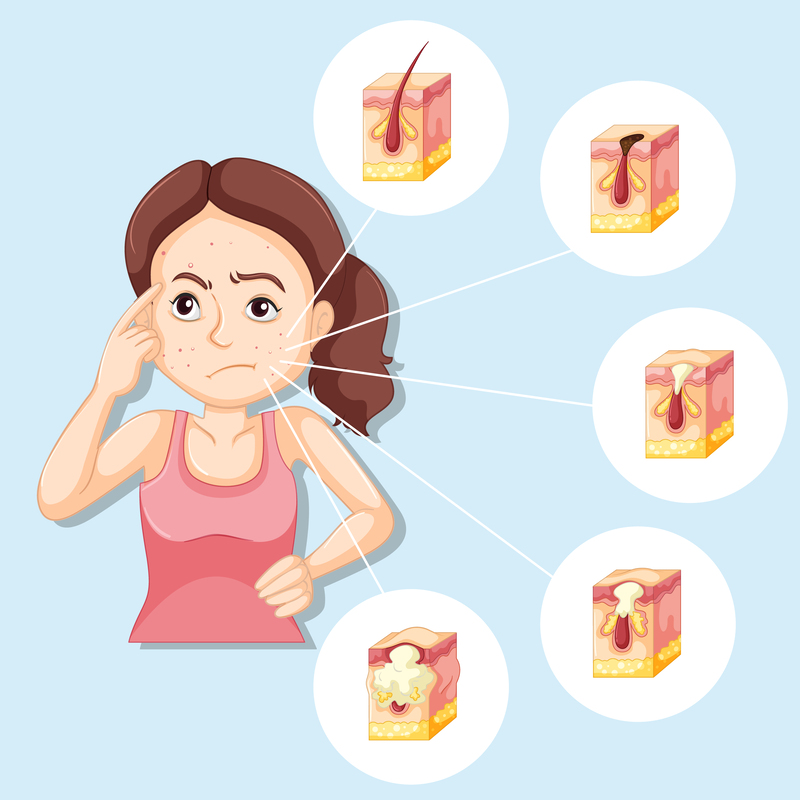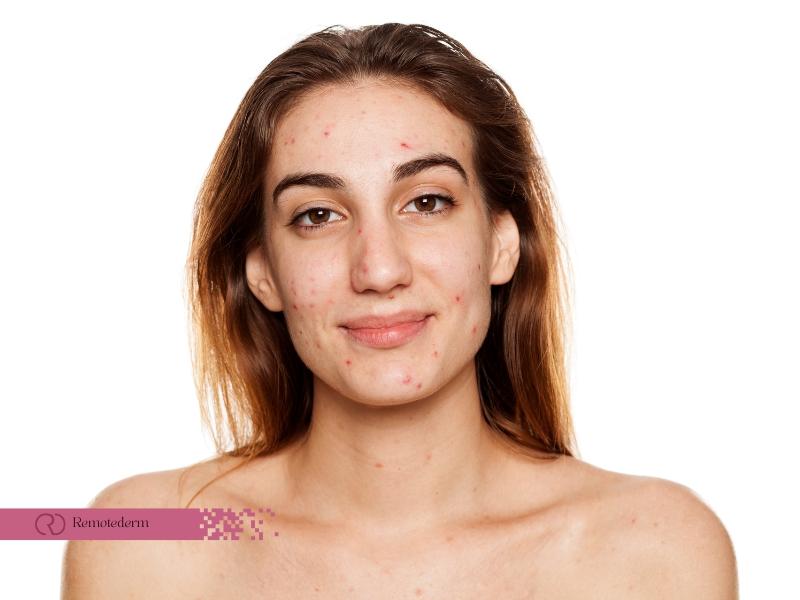Struggling with stubborn acne breakouts? The culprit could be acne-causing bacteria. In this comprehensive guide, we’ll explore the science behind acne bacteria, help you distinguish it from hormonal acne, and share natural remedies to tackle breakouts effectively. Whether you’re in urban centers or rural communities across Canada, this guide will empower you with the knowledge to take control of your skin and say goodbye to those frustrating pimples.
Unmasking Acne Bacteria
This section delves into the intricacies of one of the most common skin conditions. By learning about the key bacterial culprit, Propionibacterium acnes (P. acnes), and its role in acne development, we arm ourselves with the knowledge needed to tackle and treat bacterial acne effectivelyto effectively tackle and treat bacterial acne. Understanding the distinctive features of bacterial versus hormonal acne paves the way for more personalized and successful skin care interventions.
Understanding Bacterial Acne
Before we can conquer the enemy, it’s essential to comprehend it. Acne vulgaris, scientifically termed acne, often involves the presence of acne bacteria. Acne vulgaris is a broad term encompassing various skin blemishes, with the P. acnes bacteria playing a pivotal role in their development. This segment explains how P. acnes bacteria interact with our skin ecosystem and influence the severity of acne symptoms.
Demystifying the Appearance of Bacterial Acne
Recognizing bacterial acne is a crucial step in effective treatment. Bacterial acne typically presents as inflamed, red bumps containing a white or yellow center. The painful pustules are a result of the Propionibacterium acnes (P. acnes) bacteria thriving in clogged hair follicles. This outline aids not only in identification but also in understanding why bacterial acne may persist despite various treatment attempts.
How To Tell If Acne Is Hormonal or Bacterial?
Discerning between hormonal and bacterial acne is essential for targeted treatment. Hormonal acne tends to appear on the jawline or chin, often linked to hormonal imbalances. Conversely, bacterial acne affects the entire face, characterized by widespread inflamed lesions. This distinction helps in crafting a tailored approach, ensuring that patients receive the appropriate interventions for their specific type of acne.

How To Treat Bacterial Acne?
Dealing with bacterial acne requires a comprehensive approach to target the root causes and relieve symptoms effectively. Here’s a clear, concise guide on how to treat bacterial acne and get your skin back on track—whether you’re in Canada’s urban centers or rural areas.
- Gentle Cleansing: Use a mild, non-comedogenic cleanser to remove excess oil and prevent pore clogging.
- Topical Antibiotics: Incorporate topical antibiotics like benzoyl peroxide or salicylic acid to target acne bacteria and reduce inflammation.
- Prescription Medications: Consult a dermatologist for prescription medications, such as antibiotics or retinoids, to address severe cases.
- Healthy Lifestyle: To support overall skin health, eat a balanced diet, stay hydrated, and learn how to manage stress.
Natural Remedies For Bacterial Acne
Having identified bacterial acne, let’s explore holistic methods to conquer it. Incorporate the following natural remedies into your skincare routine:
- Tea Tree Oil:
Celebrated for its potent antibacterial properties, it stands out as a formidable ally in the battle against acne bacteria. Recognized for its natural ability to combat skin issues, this essential oil can be effectively applied to affected areas.
- Honey and Cinnamon Mask:
Presents a soothing and indulgent solution to combat acne. By blending honey and cinnamon, you create a mask with both antibacterial and anti-inflammatory properties. Applying this mixture to your face and allowing it to rest for a generous 15 minutes provides an opportunity for the skin to absorb the beneficial components.
- Aloe Vera Gel:
Renowned for its multifaceted healing properties, particularly in the realm of skincare, it offers a soothing remedy for those dealing with bacterial acne. Its anti-inflammatory benefits play a crucial role in reducing redness and inflammation associated with acne breakouts.
- Green Tea Extract:
Brimming with antioxidants, emerges as a versatile solution for promoting clear and healthy skin. Whether applied topically or consumed internally, green tea extract contributes to the skin’s well-being. Its antioxidant-rich nature helps combat free radicals, reducing the potential for skin issues, including acne.
The landscape of acne treatment in Canada has been transformed by the rise of online solutions, making it easier than ever to address bacterial acne. Virtual dermatologist consultations, a key feature of this digital shift, enable individuals to receive expert advice remotely through video consultations and online platforms. This digital approach not only eliminates the need for in-person appointments but also empowers Canadians to take a more active role in their skincare routines, regardless of their location.

Furthermore, the online acne treatment arena extends beyond consultations, providing a wealth of information and resources. Personalized skincare regimens, facilitated by advanced algorithms on digital platforms, cater to individual skin types and lifestyles. Online communities on social media platforms and forums offer valuable support, fostering a collaborative environment where individuals can share experiences and seek encouragement during their acne journey. As technology evolves, the integration of healthcare and digital platforms continues to enhance accessibility and introduce innovative solutions in the dynamic world of online acne treatment.
Final Thoughts
In summary, understanding acne bacteria and distinguishing it from hormonal acne is essential for effective treatment. Natural remedies like Tea Tree Oil, the Honey and Cinnamon Mask, Aloe Vera Gel, and Green Tea Extract provide a holistic approach to skincare. At the same time, the digital revolution has made acne treatment more accessible in Canada through virtual consultations and personalized regimens. With the integration of healthcare and digital platforms, along with supportive online communities, Canadians can take an active role in their skincare journeys. Ultimately, combining knowledge, natural remedies, and digital solutions offers a comprehensive strategy to combat acne bacteria and achieve clear, healthy skin.
FAQs
- Can stress contribute to bacterial acne development?
While stress itself doesn’t directly cause bacterial acne, it can exacerbate existing skin conditions, including acne. Stress may trigger hormonal changes that contribute to increased sebum production, creating an environment where acne bacteria can thrive.
- Are there dietary factors that worsen bacterial acne?
Certain foods with a high glycemic index and dairy products have been associated with exacerbating acne symptoms. These items may influence hormonal fluctuations and contribute to increased inflammation, potentially impacting the severity of bacterial acne.
- Is it possible for bacterial acne to develop in adults, not just teenagers?
Yes, bacterial acne can affect individuals of all ages, not just teenagers. Adult-onset acne is influenced by various factors, including hormonal changes, stress, and genetic predispositions. Identifying the underlying causes is crucial for effective treatment.
- Can over washing the face worsen bacterial acne?
Overwashing the face can strip the skin of its natural oils, leading to increased sebum production as a compensatory mechanism. This can potentially worsen bacterial acne by creating an environment conducive to the growth of acne-causing bacteria.
